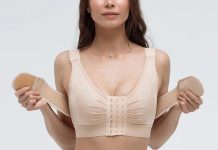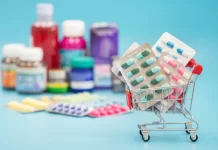Detergent capsules are single-filled best plant based laundry detergent capsules that contain concentrated liquid detergent in a water-soluble membrane that dissolves when it comes in contact with moisture. Detergent capsules were introduced to the US market in 2010 and now several manufacturers sell detergent packaged in capsules. Each capsule contains detergents, stain removers, and brighteners. And the innovative multi-chamber design separates important ingredients until they reach the sink for maximum cleaning ability.
Canadian Drugs Online said that detergent capsules that are in bite-sized and colorful packages are very attractive to children. With its composition intended for washing clothes, it is certainly not intended and dangerous for internal use. Therefore, it should be kept out of reach of small children, who often fail it as something edible. Ninety-four percent of the poisonings caused by these detergent capsules occur among children 5 years of age and younger.
According to the affiliated Canadian Dispensing Pharmacy and Dr. José Rosa-Olivares, Medical Director of the Pediatric Care Center at Miami Children’s Hospital, these small detergent capsules are small, bright, and colorful, and they delight innocent children. If swallowed, the strong best plant based laundry detergent cleaning chemicals contained in the capsules can cause a range of adverse conditions, from the insignificant stomach or respiratory problems to large warning signs that can lead to death.
Symptoms of detergent capsule poisoning include abdominal pain, vomiting, diarrhea, and extreme shortness of breath. Children can also be confused and sleepy. If a child swallows one of these capsules, the first step is to call the local poison control fund and follow the instructions given to them. In most incidents, the child must be immediately rushed to the emergency room via EMS and prescribed Canadian medication.
The study researchers recommended that parents be assured that they can prevent children from reaching for household cleaners – to be specific detergent capsules. Physicians and healthcare providers are advised to account for each detergent-related contact and disease situation associated with their local poison base.
This poisoning problem is not limited to the United States. In fact, in the UK, the National Poison Information Service recognized around 650 calls related to detergent poisoning; in addition, the study revealed approximately XZ 4,000 more cases. Therefore, laundry detergent makes it one of the most widely used household items that is inadvertently ingested and thus causes parents to buy Canadian medicine.
A detergent is a surfactant or a mixture of surfactants with “cleaning properties in dilute solutions”. These substances are generally alkylbenzenesulfonates, a family of compounds that are similar to soap but are more soluble in hard water because polar sulfonate (from detergents) is less likely than polar carboxyl (from soap) to bind calcium and other ions found. in hard water. In most household contexts, the term detergent itself refers specifically to detergent or dishwashing detergent, as opposed to hand soap or other types of detergents. Detergents are usually available in the form of powders or concentrated solutions. Detergents, like soaps, work because they are amphiphilic: partly hydrophilic (polar) and partly hydrophobic (non-polar). Its dual nature makes it easy to mix hydrophobic compounds (like oil and grease) with water. Because air is not hydrophilic, detergents are also foaming agents to varying degrees.
Healthy choices with completely natural detergent
As the world hopes to steer clear of added synthetic substances and the adverse impact they have on our well-being and the earth, it is important to perceive the elements that can become completely normal without limiting your manageability. All normal and natural baby laundry does not contain disinfectant, bleach, dyes or other hazardous chemicals, but can still be used to remove dirt and stains while preserving shiny new textures.
Today, many detergents are manufactured with destructive additives, such as bleaches, chemicals, and optical brighteners. In fact, even after blushing, these flare-ups can leave an accumulation on garments that damage the shade and surface after a while. Despite affecting the quality and tone of clothing and materials, these chemicals can cause skin disorders, trigger sensitivities and other adverse effects on well-being.
Oil and phosphate, both normal in common cleaning products and potential agents for antagonistic effects on well-being, are not found in all characteristic or natural washing cleaners. Goods, e.g. Seventh-generation detergent, uses catalysts and plant-derived operators to remove dirt and stains as viable as any common brand; however, they do not convey the great danger of skin discomfort and will be much safer for nature when they are. watered the exhausted.
Sympathy for skin deterioration is significantly more prominent in people with babies. While many people will use baby-specific items such as detergent, oil and detergent, they often use brutal chemicals that are indistinguishable to your baby’s clothes than they do alone. A baby’s skin is unusually fragile and prone to rashes and discomfort. If the skin has inconsistent contact with clothing and materials that have been treated with aggravating chemicals, it may even aggravate these side effects. In fact, even a parent’s skin can become unusually altered after a grim treatment of dirty laundry and leave their hands hard and dry. Using a completely ordinary or natural detergent is an ideal method to protect you and your newborn from these constant skin problems.
Many common cleansers will advertise items that are common or gentler on skin and textures, but in reality, these detergents are often colorless and fragrant. These “milder” detergents still contain cruel chemicals and fluorescent brighteners that are left on the clothes after each wash. An ideal approach to ensure that your baby avoids these complaints is to use a 100% normal or natural detergent. These items use only regular fittings and are best designed to keep your dress delicate, cute and fabric free. They use safe, non-polluting and biodegradable fixations that are regularly derived from green foods. These bindings are gentle enough not to damage even a baby’s delicate skin, but still strong enough in the middle of the sink to normally flush dirt, stains and odors out of clothes and diapers.
With a value similar to regular detergents and without extra hassle in your washing plan, there is no motivation not to decide a good choice for you, your baby and the ground by using a completely normal detergent.
Fresh start marketing and packaging has a new beginning for powdered detergent
But in the early 1980s, liquid detergent brands began to rise in sales, largely due to the success of ad campaigns. So to add some new life and increase the advertising glow of the old powdered detergent, Colgate-Palmolive decided to replace the original box with its powdered detergent to put a new spin on the old formula. They packed their detergent in powder form in a flat, clear plastic bottle with a handle on one side. The new packaging looked exactly like a liquid detergent bottle, but contained the granulated powder with a measuring cup for the lid. This powder detergent in the innovative package with new style was aptly named “Fresh Start” because it was definitely a new beginning for detergent in powder form. Fresh Start detergent became the first easy to use, easy to dose powder laundry. And the laundry brand Fresh Start gained a large share of the consumer market due to its unique properties on supermarket shelves, very practical packaging, the bottle’s new “fresh” look and the associated brand name.
This package was very innovative for detergent in powder form. Back then when it was invented, powdered detergent was mainly available in cardboard boxes that the consumer had to open at the top to access the product inside. The perforated cardboard made pouring the detergent messy and spilled with large spills. In addition to the clutter, most boxes have a plastic measuring spoon buried inside that can be used to measure the correct amount of powder detergent to include per day. Washing machine, but the consumer must remove the spoon, which is sometimes difficult to do in the large box. This can stain your hands and floor with powdered detergent every time you wash a garment.
Carton sizes for brands of powdered laundry powder can range from small 2-ounce disposable boxes sold from vending machines in laundries to large bulk ounces in size 12 ounces. 20 pounds sold in bulk. shopping stores. For household use, powdered detergent is usually sold by volume in boxes containing approx. 2 to 6 pounds of detergent. Since the smaller 2 ounce boxes are very convenient for single use, the larger 20 pound cardboard boxes have a better chance of getting cluttered.
Today, while most other powdered detergents are still sold in cartons, Fresh Start powdered detergent is still available in the same innovative plastic bottle packaging that consumers love. The only thing that has changed is that it now has a compact concentrated formula without fillers that allow for a powerful cleaning with detergent that is safe for all fabrics and works at all temperatures. This low-flow detergent allows for a clean rinse and clean laundry, and the plastic bottle is still easy to pour and measure, making laundry easy, clean and root-free. The unique shape of the packaging, the quality of the product and the brand recognition that came with a very successful marketing campaign over 30 years ago, made Fresh Start a well-known name and a leading detergent in powder form.








